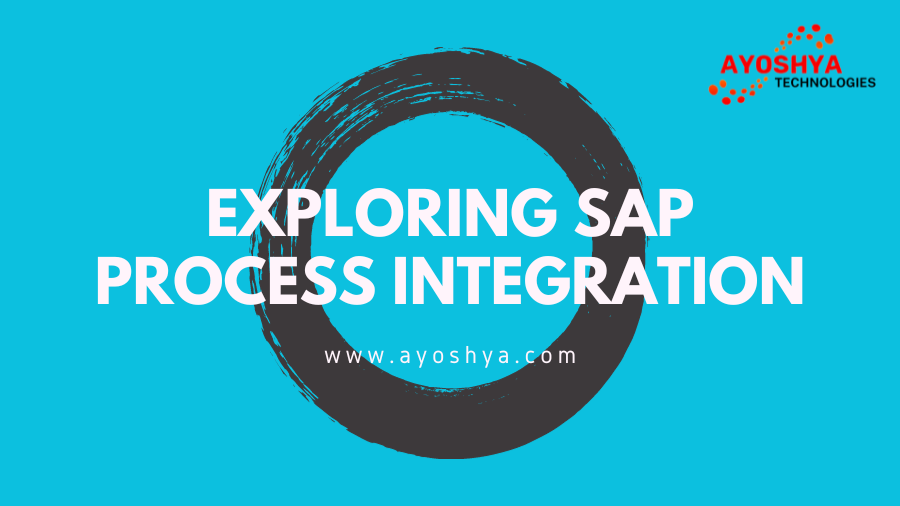Exploring SAP Process Integration
In the ever-evolving landscape of enterprise technology, achieving seamless integration is not just a goal; it’s a necessity. Enter SAP Process Integration (SAP PI), a powerful tool designed to streamline communication between systems, enhance data consistency, and propel businesses into the digital age.
Introduction
At its core, SAP Process Integration is the glue that binds disparate systems within an organization, ensuring a harmonious flow of information. In this article, we embark on a journey to demystify SAP PI, understanding its functionalities, benefits, and its pivotal role in fostering business agility.
Understanding SAP Process Integration
SAP PI goes beyond mere integration; it’s a comprehensive solution designed to connect various applications within an organization’s landscape. This section delves into the intricacies of SAP PI, exploring its functionalities and highlighting key features that set it apart in the integration landscape.
Benefits of SAP Process Integration
The benefits of SAP PI are far-reaching. By streamlining communication between systems, it eliminates data silos, enhances data consistency, and ensures accuracy in business processes. This section explores how businesses stand to gain from adopting SAP PI.
Integration with SAP Solutions
A notable strength of SAP PI lies in its seamless integration with other SAP modules. This integration creates a unified environment where information flows seamlessly across the organization. Here, we explore how SAP PI contributes to the holistic integration of SAP solutions.
Role in Digital Transformation
In an era where digital transformation is no longer an option but a necessity, SAP PI plays a pivotal role. It acts as a catalyst in the digitalization of business processes, ensuring that organizations can adapt to the changing technological landscape with agility.
SAP Process Integration vs. Traditional Integration Methods
Contrasting SAP PI with traditional integration methods brings to light the advantages of choosing this robust solution. From flexibility to real-time insights, SAP PI stands out in its ability to meet the dynamic integration needs of modern businesses.
Challenges and Solutions in Implementation
Implementing SAP PI may come with its set of challenges. This section not only highlights common hurdles but also provides practical strategies to overcome them, ensuring a smooth implementation process.
Real-world Use Cases
Examples speak louder than words. Real-world use cases showcase how organizations have successfully implemented SAP PI, leading to positive impacts on operational efficiency, collaboration, and overall business performance.
User-Friendly Interface and Accessibility
SAP PI doesn’t just cater to IT specialists; its user-friendly interface ensures accessibility for users across the organization. Minimizing complexities, SAP PI empowers end-users to interact with the system effortlessly.
Security Measures in SAP Process Integration
In an age where data security is paramount, SAP PI prioritizes safeguarding sensitive information. This section explores the security measures in place and strategies for ensuring compliance and data integrity.
Scalability and Future-Readiness
The scalability of SAP PI is crucial for businesses anticipating growth. This section emphasizes the importance of scalability and how SAP PI positions organizations for future technological advancements.
SEO Optimization for SAP Process Integration
In the digital landscape, visibility is key. This section provides insights into SEO optimization strategies, ensuring that businesses can be easily found for SAP PI-related searches.
Role in Industry-Specific Solutions
Acknowledging the diversity of industries, this section explores how SAP PI can be tailored to meet industry-specific needs, providing customized solutions for maximum efficiency.
SAP Process Integration Training and Adoption
To fully unlock the potential of SAP PI, user training is paramount. This section emphasizes the significance of training programs in maximizing the benefits of SAP PI and fostering widespread adoption within organizations.
Conclusion
In conclusion, SAP Process Integration is not merely a tool; it’s a conductor orchestrating a symphony of business processes. As businesses strive for efficiency, agility, and seamless communication, SAP PI emerges as a linchpin in achieving these goals.
Frequently Asked Questions
- Is SAP Process Integration suitable for small businesses?
- Yes, It is scalable and adaptable, catering to the needs of both small and large businesses.
- How does Process Integration enhance data consistency?
- By streamlining communication between systems, SAP PI eliminates data silos, ensuring consistency across processes.
- What challenges might businesses face in implementing Process Integration?
- Common challenges include data integration complexities, which can be overcome with proactive strategies outlined in the article.
- Can Process Integration be customized for specific industry needs?
- Yes, SAP PI is versatile and can be tailored to meet the unique requirements of different industries.
- How can businesses optimize their online presence for Process Integration searches?
- Implementing SEO strategies, including keyword optimization, can significantly improve online visibility for SAP PI-related searches.
You may be interested in:
What is SAP CPI: Integration for Seamless Business Processes



